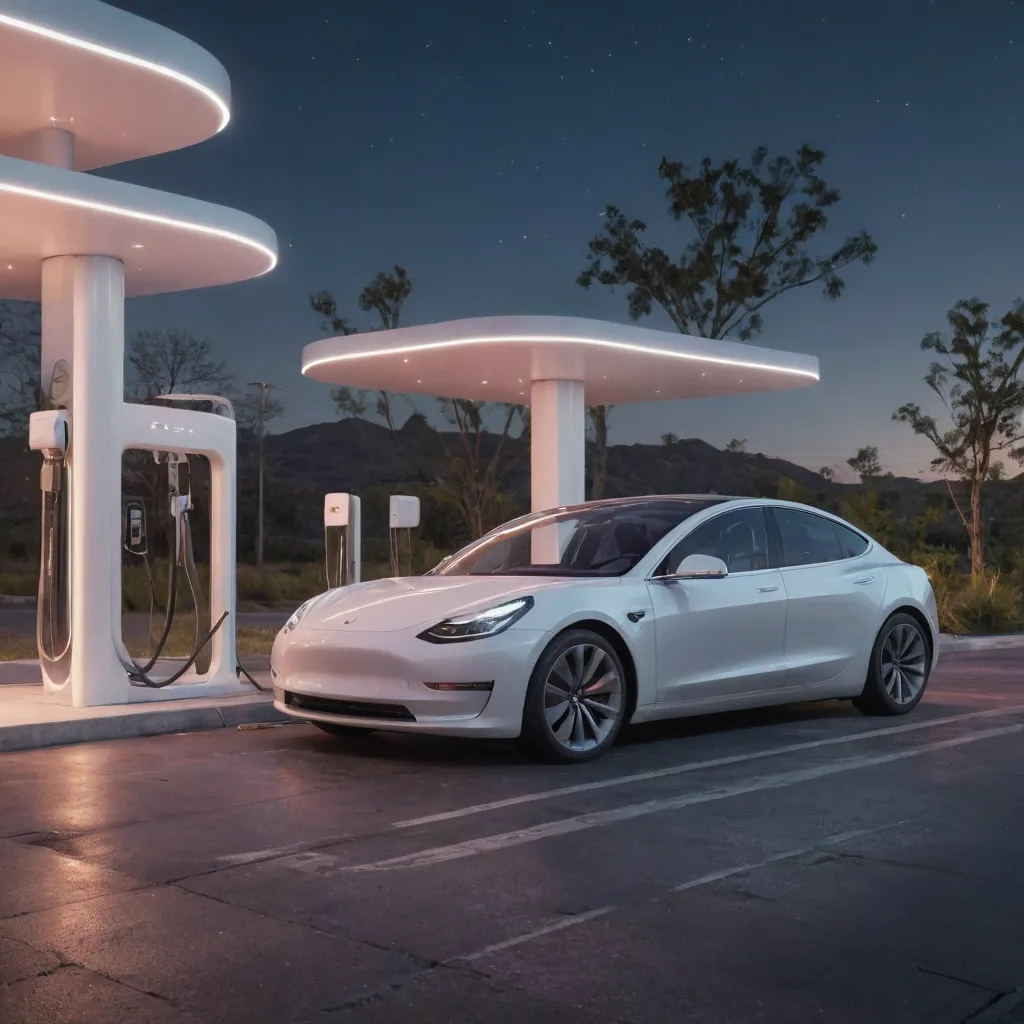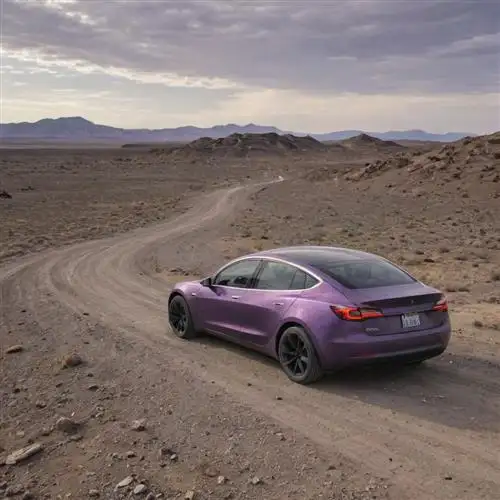
Performance and Acceleration
The Tesla Model 3 is widely celebrated for its exceptional performance and acceleration capabilities. With the instant torque delivery of its electric powertrain, the Model 3 can rocket from 0 to 60 mph in as little as 3.1 seconds, depending on the specific configuration. This blistering acceleration is a result of the vehicle's powerful electric motors, advanced battery technology, and sophisticated power management system.
The base Model 3 Standard Range Plus variant can accelerate from 0 to 60 mph in 5.3 seconds, which is remarkably quick for a sedan in its class. The Long Range and Performance variants take the performance to an even higher level, with the Long Range model capable of 0-60 mph in 4.2 seconds and the Performance variant reaching this benchmark in just 3.1 seconds. This level of acceleration puts the Model 3 on par with many high-performance sports cars, offering an exhilarating driving experience that is unmatched in the electric vehicle segment.
The instant torque delivery of the electric motors in the Model 3 provides a seamless and linear power delivery, allowing for effortless merging onto highways, confident passing maneuvers, and an overall sense of responsiveness and control. The vehicle's low center of gravity, due to the battery pack's placement beneath the floor, also contributes to its impressive handling characteristics, enabling sharp turns and agile cornering.
In addition to the raw acceleration figures, the Model 3 also boasts exceptional top speeds for an electric vehicle. The Performance variant can reach a top speed of 162 mph, while the Long Range and Standard Range Plus models have top speeds of 145 mph and 140 mph, respectively. These impressive top speeds further demonstrate the Model 3's capabilities as a high-performance electric sedan.
Range and Efficiency
The Tesla Model 3 is renowned for its impressive range and unparalleled efficiency. Powered by a state-of-the-art electric powertrain, the Model 3 boasts an EPA-estimated range of up to 358 miles on a single charge for the Long Range variant. This remarkable feat is achieved through a combination of advanced battery technology, aerodynamic design, and innovative energy-saving features.
One of the key factors contributing to the Model 3's exceptional range is its highly efficient electric motor. Utilizing permanent-magnet synchronous reluctance technology, the motor delivers instant torque and maximizes the vehicle's energy utilization. This, coupled with the car's lightweight, aluminum-intensive construction, allows the Model 3 to extract the most out of every kWh of battery power.
The Model 3's regenerative braking system is another notable feature that enhances its efficiency. This system converts the kinetic energy generated during braking and coasting back into electrical energy, which is then stored in the battery. This not only improves the car's range but also reduces brake wear, contributing to a more sustainable driving experience.
Furthermore, the Model 3's aerodynamic design, with a low drag coefficient of just 0.23, plays a crucial role in minimizing energy consumption. The car's sleek shape, coupled with strategic placement of components and features, such as the flush door handles and the retractable charge port, all contribute to the Model 3's remarkable efficiency.
In addition to its impressive range, the Tesla Model 3 also boasts exceptional energy efficiency. The car's EPA-estimated energy consumption rating of 130 MPGe (miles per gallon equivalent) for the Long Range variant is among the best in its class, making it a standout choice for eco-conscious drivers. This efficiency translates to lower energy costs and a reduced environmental impact, making the Model 3 an attractive option for those who prioritize sustainability.
Autopilot and Self-Driving Capabilities
The Tesla Model 3's Autopilot system is one of the most advanced driver-assistance technologies available in a production vehicle. It combines a suite of cameras, sensors, and radars to provide a level of automation that can make driving safer and more convenient. However, it's important to understand the capabilities and limitations of this system to ensure you use it safely and responsibly.
Autopilot is designed to assist drivers, not replace them entirely. It can handle tasks like maintaining a safe following distance, staying centered in the lane, and even navigating highway on-ramps and off-ramps. But it's not a fully autonomous system, and drivers are still required to remain alert and ready to take control at all times.
One of the key features of Autopilot is its ability to perform lane changes. By simply activating the turn signal, the system will scan for an open lane, signal, and execute the lane change safely. This can be a valuable asset in heavy traffic or when merging onto the highway.
However, it's important to note that the The Controversial Truth About the Tesla Model 3's Autopilot is not infallible. There have been several high-profile incidents where the system has failed to detect obstacles or respond appropriately, leading to collisions. Tesla has been transparent about the limitations of Autopilot, and it's crucial that drivers understand these limitations and remain vigilant when using the system.
In addition to Autopilot, the Tesla Model 3 also offers a suite of advanced safety features, including automatic emergency braking, forward collision warning, and blind spot monitoring. These features can provide an extra layer of protection and help mitigate the risk of accidents.
Overall, the Tesla Model 3's Autopilot and self-driving capabilities are impressive, but they should be used with caution and a full understanding of their limitations. Drivers should always be prepared to take control of the vehicle and never rely solely on the system to handle every driving situation.
Interior Design and Comfort
The interior design and overall comfort of the Tesla Model 3 are crucial factors to consider when deciding whether to purchase this electric vehicle. Tesla has placed a strong emphasis on creating a minimalist and technologically-advanced cabin that aims to provide a seamless driving experience.
At the heart of the Model 3's interior is a large, 15-inch central touchscreen display that serves as the primary interface for controlling nearly all of the car's functions, from climate control to media playback. This uncluttered layout eliminates the need for numerous physical buttons and knobs, creating a clean and modern look. However, some users may find the touchscreen-centric approach a bit overwhelming, especially when attempting to make adjustments while driving.
The seats in the Model 3 are designed for both comfort and support, with ample adjustability options to accommodate a wide range of body types. The front seats offer generous legroom and headroom, and the overall seating position is designed to provide a commanding view of the road. The rear seats can comfortably accommodate two adults, though taller passengers may find the headroom a bit limited.
One noteworthy feature of the Model 3's interior is the use of premium materials, including a vegan leather-wrapped steering wheel and door panels. The minimalist aesthetic is further emphasized by the absence of traditional instrument clusters, with all necessary information displayed on the central touchscreen or the small digital display behind the steering wheel.
In terms of storage and practicality, the Model 3 offers a decent amount of space, with a front trunk (also known as a "frunk") and a rear trunk providing ample cargo room. The cabin also features various storage cubbies and door pockets for storing personal items.
However, it's important to note that the Model 3's interior design may not suit everyone's preferences. The lack of physical controls and the reliance on the touchscreen may be a dealbreaker for some drivers who prefer a more tactile and traditional approach to vehicle controls.
Charging Infrastructure and Convenience
The Tesla Model 3's unique charging capabilities are a significant factor to consider when deciding whether to purchase this electric vehicle. Tesla has built an extensive network of Supercharger stations across the United States and many other countries, making long-distance travel a breeze for Model 3 owners. These Supercharger stations can replenish the vehicle's battery from 0 to 80% in as little as 30 minutes, providing a convenient and efficient charging solution for road trips and longer journeys.
However, the convenience of Supercharging may not be the primary concern for all buyers. Many Model 3 owners charge their vehicles at home, utilizing the included mobile connector and a standard 120V household outlet. This method is slower, typically adding around 3 to 5 miles of range per hour, but it's a practical solution for daily commuting and overnight charging. For those with access to a 240V outlet, the installation of a wall connector can dramatically improve the home charging speed, allowing the Model 3 to add up to 44 miles of range per hour.
The availability of public charging stations is another important consideration. While Tesla's Supercharger network is extensive, there are also a growing number of third-party charging stations, including those operated by companies like ChargePoint and Electrify America. These public charging options can be useful for topping up the battery during longer trips or when away from home. However, the charging speeds and compatibility may vary, and it's essential to research the charging infrastructure in your local area before making a purchase decision.
















